Weddell Island South Atlantic Ocean
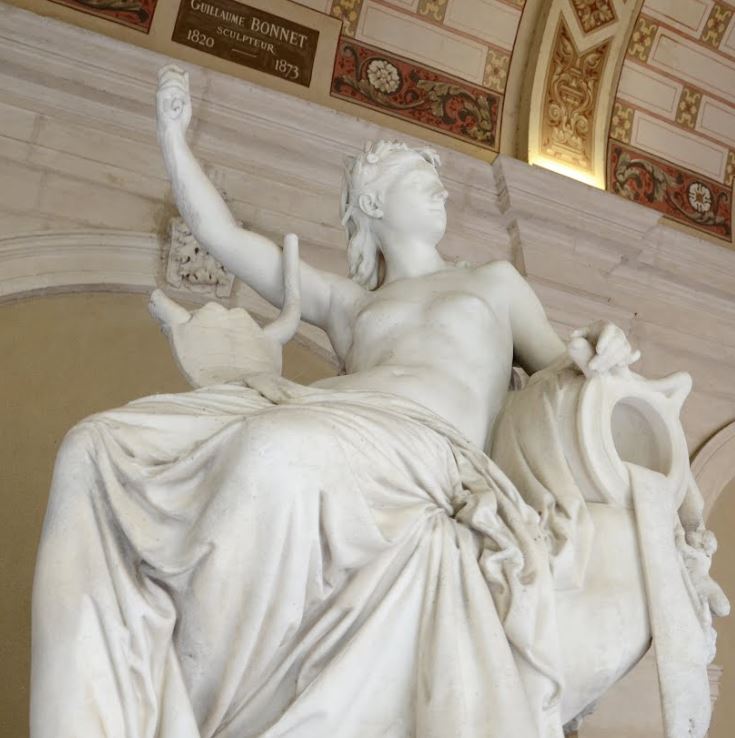
In Greek Mythology Castalia was a Naiad, a water Nymph, divine and sacred to the springs and rivers of the countryside. Daughter of the gardener Achelous, Castalia was believed to have come to Delphi in search of Python, but, pursued by the God Apollo, whose advances she would rather avoid, she turned herself into a fountain on the mountain of Parnassus North of Corinth. From that point onwards anyone who drank at the spring of Delphi or listened to the waters could be gifted the art of poetry by Castalia, indeed the waters of her spring were used to purify the temples of Delphi, where the oracles would speak in tongues to the likes of Leonidas, the Hoplite warrior king of Sparta, before the battle of Thermopylae………What better name for the sleekest of Yachts out of the Inman and Son’s shipyard at Lymington……
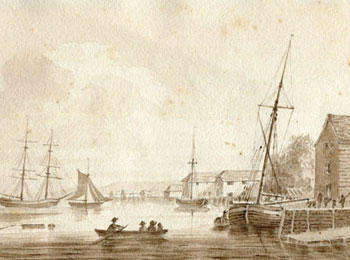
Shipbuilding at Lymington stretches back to the 1300’s when Lymington supplied 9 ships to King Edward the First in “defence of the Realm” between 1272 & 1307. Ownership of the Lymington Yard, now the home of prestigious Yacht Makers Berthon, can be traced to John Rogerys from 1513, then Charles Guidot, up to 1667 when it was bought by a John Coombes, all manner of wooden ships were traded initially and then, when Thomas Inman bought the yard in 1819, a move towards large schooners or “Gentleman’s sailing yachts” began to dominate the firm’s output. The origin of the America’s Cup can be traced to the race around the Isle of Wight between the “Gentleman’s Yachts” Alarm, Arrow and Lulworth, pitted against the yacht America 22nd of August 1851. Castalia was one of those magnificent gentleman’s sailing yachts, a schooner, built and launched 07th July 1874, at 120 tonnes and officially numbered hull 68834, Castalia was registered with Lloyd’s of London (1875) under the ownership of Adrian Elias Hope (son of a wealthy regency furniture designer), and skippered by O. Andrews
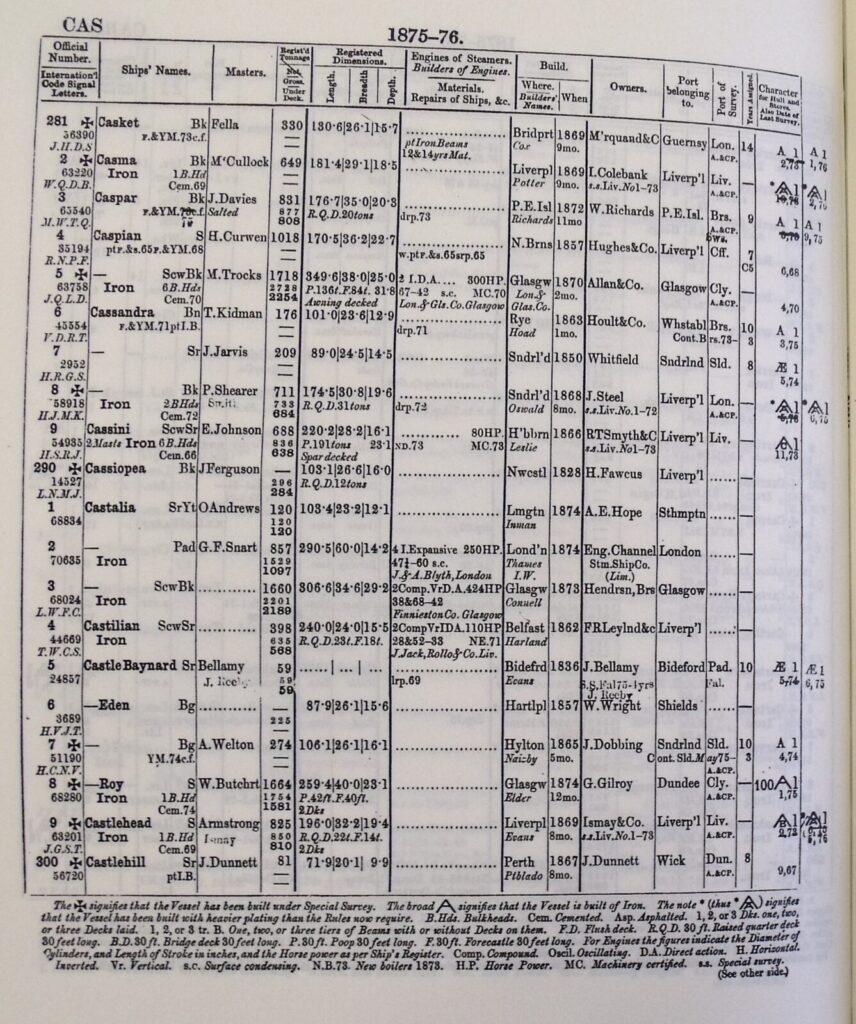
On the 07th July 1874 Charles Henry John Chetwynd-Talbot, 20th Earl of Shrewsbury, 20th Earl of Waterford (Ireland), 5th Earl Talbot and Viscount Ingestre, was approaching his Fourteenth birthday and in school at Eton…… This just two years before the death of his father, his inheritance of the family’s hereditary titles……. and just Five years from his scandalous elopement with the wife of a commoner, Ellen Miller Mundy (Nee Palmer-Morewood) of Shipley Hall, in the parish of what is now the Borough of Amber Valley. More on the Miller Mundy family and Viscount Ingestre a little later, suffice to say destiny had an interest in the Nymph of Delphi and the errant Ellen Miller Mundy….. and a place for Charles Chetwynd-Talbot, the Viscount Ingestre
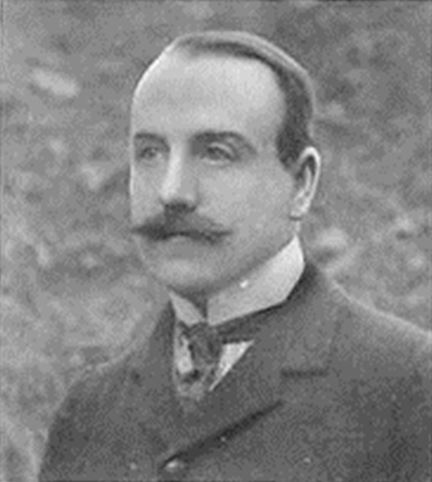
Castalia began her almost clandestine career in the ownership of A.E Hope, but came quickly under the new ownership of a John B. B. Coulson between the years of 1876 and late 1879, possibly even until the end of 1880. Now it should be obvious Castalia is not just a plaything, she was built at 120 Tonnes and designated a schooner, (a description of her rigging more than anything else), which certainly sets her above the weekend sail boats that hug the shores of Cowes, never to see the open ocean, but for their Victorian Gentleman Owners’ fear of spilling their martinis…. A typical Schooner of the time generally had Two masts, fore and aft rigged sails, occasionally “square rigged” but could oddly have up to Seven masts. It would be somewhat unlikely for an Inman & Son’s Schooner of that era to have more than three masts and it is reasonably assumed, in the absence of any other information, that two masts was the rig of the Castalia. Sadly, despite extensive searching, Castalia’s records at Berthon’s, (Latterly custodians of Inman & Son’s records) seem to have been amongst those lost to fire during the war years, long after her sinking, when Lymington Gosport and the Southampton area bore the brunt of Hitler’s Nazi bombing raids against British shipyards and coastal ports
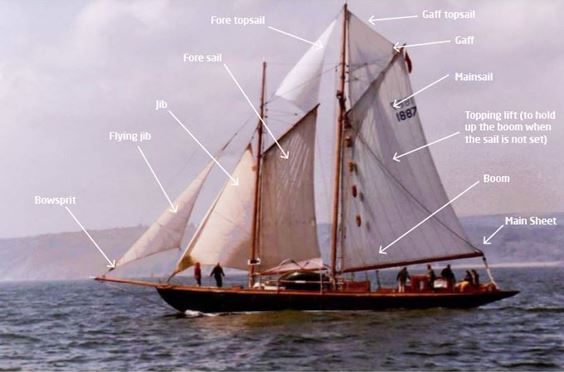
Colonel John B. Blenkinsopp-Coulson was a descendant of Randulph de Blenkinshope of the town of Blenkinsopp, West of Haltwhistle in Northumberland, and landowners of that town since 1240. Little is known about Colonel Blenkinsopp Coulson (or of his ownership of Castalia), save that he built Blenkinsopp Hall, situated on the North bank of the Tipalt, and whose son William Lisle Blenkinsopp-Coulson (1840-1911), himself a colonel in the British Army, became well known as a philanthropist. There was a memorial fountain, (proposed by no less than the First Secretary to the Paris Embassy at the time, George Graham) erected in memory of Col William Lisle Blenkinsopp-Coulson, in honour of his charitable work with the “Humanitarian League” and many children’s and animal welfare charities. Once again Castalia seems to have slipped the net of publicity, despite being in such highly regarded ownership
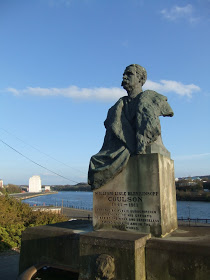
Somewhere between 1880 and 1881 the Castalia is sold to Benjamin Nicholson of Portsmouth, Yacht Designer for Camper and Nicholson, where she stays for a brief 18 months or so, perhaps undergoing a refurbishment or re-fit before, in July of 1882, passing into the hands of one Charles Chetwynd-Talbot, Viscount Ingestre and 20th Earl of Shrewsbury, 20th Earl of Waterford and “Premier Earl of England”
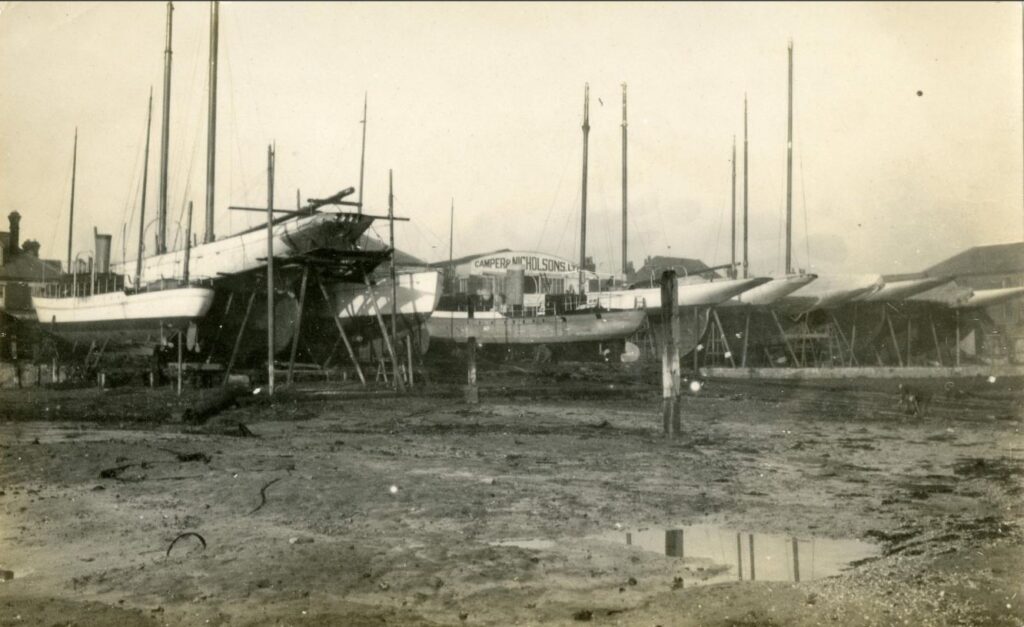
Castalia is now owned by, literally, the highest ranking Earl of England (known as the Hereditary Great Seneschal) in the reign of the Queen of half the globe, Alexandrina Victoria….Her Majesty Queen Victoria. Here the Castalia nears infamy, through no fault but that of circumstance, of which, more later. At this point in her history we know as much about the Castalia as can be known, we even have listed crew for both Benjamin Nicholson’s ownership and that of Charles Chetwynd-Talbot
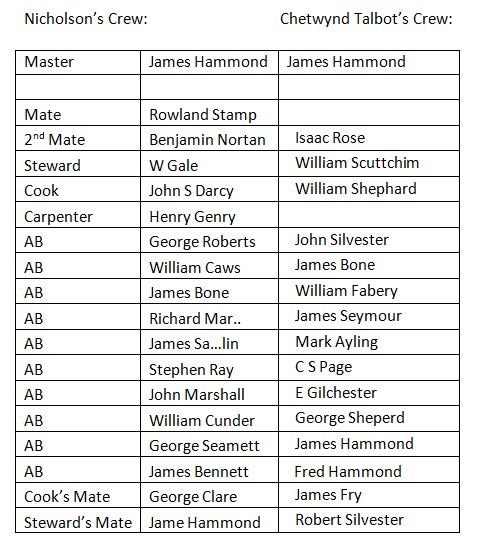
In his defence, the Viscount Ingestre, Major Charles Chetwynd Talbot of Alton Towers, (his family home until his dalliance with Ellen Miller Mundy, wife of Alfred Miller Mundy of Shipley Hall in Heanor, Derbyshire) came to his titles very young. Only 16 when his father died (as was I when my father died) the inheritance of such power and position, let alone his father’s death itself, must have a considerable effect on any young person. It is inexcusable to most, for Charles to have become involved with a married woman, (indeed, a married mother with a child), it was especially inexcusable to Victorian society who shunned Ellen, (eventually Countess Chetwynd-Talbot on her marriage to Charles 21st June 1882), from that point onwards. The role played by the Castalia in all of this is not yet played out, the circumstances of the elopement of Ellen with Charles was scandalous on more than one level, becoming an international news item, reported in many rag-tops of the day, including the Chicago Daily Tribune (June 23 1882): “England has a new premier countess [the earldom of Shrewsbury is the premier earldom of England] who is not likely to be received at court by the Queen with open arms” Perhaps the Tribune knew more than most at the time? Indeed the Miller Mundy family, or more accurately the Palmer Morewood side of the family (Ellen’s side) had a scandal of their own. Ellen had Five Brothers, of whom the eldest, Charles, had inherited the family titles and lands. (Ellen and her family was distantly descended from Lord Byron, the infamous womanising Lord, & Poet) At a Christmas gathering of the family, towards the end of the evening Charles had been drunkenly confronted by the four remaining brothers, in an attempt to force him to relinquish the family fortune. Charles had steadfastly refused to do so, despite being beaten and stripped bare, indeed beaten until unconscious. The four brothers threatened Charles’ life with a pistol pressed to his head should he not agree their demands, but, holding against the assault, eventually the brothers fled empty handed, telling a servant his lord was indisposed through drink, before making their escape. Now it seems “somehow” those Four brothers made their way from England, fleeing the wrath of Charles on his recovery, and his reporting of the threats to his life and the assault on his person, something the magistrates frowned upon, so much so the extent the warrant for their appearance at court to answer the charges was set at £20,000, a huge sum in the day. Indeed the scandal was reported in the New York Times of 29th January 1882: “….Had these civilised savages been lower in the social scale, it is said they would have been charged with a more penal offense and been offered no opportunity of liberty. Now they are reported to be laughing at the law in France or Spain. One account which reaches us from Alfreton declares they are about to embark for a cruise in the Mediterranean in the beautiful yacht of the Earl of Shrewsbury. “These four young aesthetes, their divorced and divine sister, and the lordly libertine,” says my correspondent “will make, no doubt, a merry crew.” It seems the Castalia had reached a zenith, now the most regal of getaway craft it could possibly be imagined
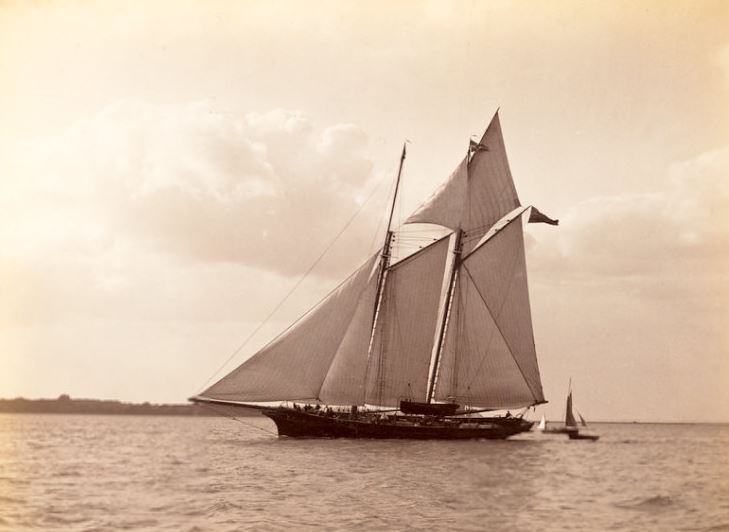
How might the Castalia have been “appointed” for such a prestigious client as Charles Chetwynd-Talbot, Viscount Ingestre? Or, put another way, what would the Castalia have looked like if we were to sail her today? I have used a contemporary 120 Tonne schooner, the Ianira, sistership to the Castalia to give the closest look we perhaps can achieve in the circumstances, she certainly has the lines of an Inman & Son’s boat and is Schooner rigged of the day. For all her involvement in the notoriety and events of the time the Castalia remained a very private ship, I spent over two years trying to find any photos, plans or even mention of her (other than that included here) including dialogue with her makers at Berthon’s, Camper & Nicholson’s, her former owners the Falkland Islands Shipping Company, even the Falkland Islands Historical Archive, and could until recently, find nothing, even the curators of Ingestre Hall, Charles Chetwynd-Talbot’s archivists have no records of Castalia, it’s as if she were a ghost, something time wished to forget………


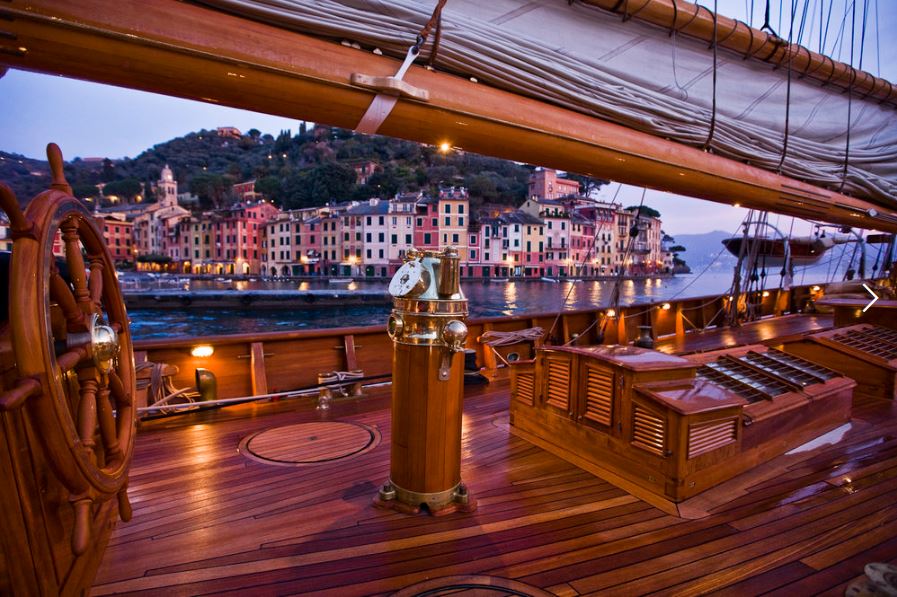
How does such a thoroughbred, of the type Castalia must have been to attract the likes of Viscount Ingestre, the Earl of Shrewsbury, simply disappear….I have no answer to give, but I know where she went to die, and I have visited her resting place and touched her bones…….but let’s not dwell on that end yet, let us look at the remainder of her life and the passage into history of the finest Inman & Son’s had to offer in 1874……. James Hammond was instructed to sail from Eastbourne 05th July 1881, Ellen Palmer Morewood having joined The Earl of Shrewsbury on the Castalia after a fracas in Strasbourg, where her husband and her brother had pursued Ellen and the Earl to confront them with their affair, both returned from Strasbourg to England via Paris and had joined the Castalia in Eastbourne and sailed (presumably amongst the Mediterranean ports) until arriving at Flushing, the Dutch port of Vlissingen 21st of October 1881, returning to England around the 25th of October 1881: “In July, 1881, the yacht was off Eastbourne, and a lady joined it with Lord Shrewsbury.” John Hammond the master of Castalia was asked if the lady was the countess and did the yacht sail with the Earl and the lady on board: “Yes…after a sail the yacht returned to England about October 25th, and Lord and Lady Shrewsbury went to a hotel in Southsea” (Hammond. J: Quoted in the New Zealand Herald 29th Nov 1913). In another article (Priestley, K.C: Quoted in the Evening Post: 02nd December 1913) reported that “…….Mrs. Miller Mundy joined Lord Shrewsbury’s yacht, ‘Castalia’ at Eastbourne. They went away from England and were absent until 21st October 1881, when they reached Flushing” and then that “….on 24th November 1881, went to the Hotel Windsor, Paris, staying there until 31st December of the same year. Next day they joined the yacht at Toulon and were cruising about together until 11th March 1882.”
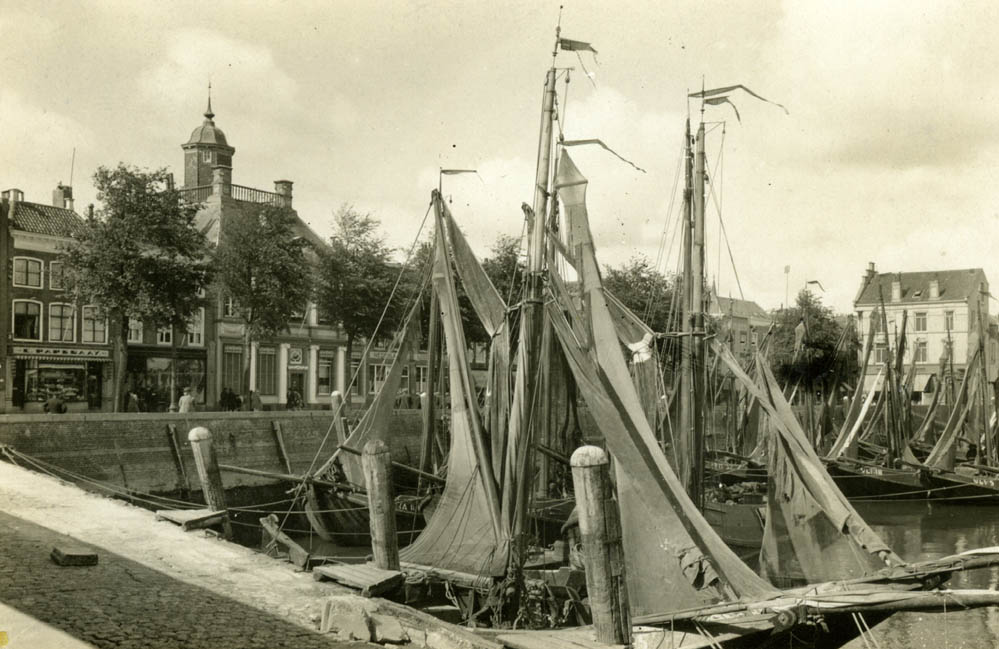
The Earl of Shrewsbury’s ownership of the Castalia continued until somewhere around 1887 when, approaching 15 years old, she changed hands, becoming the property of the Falkland Islands Company. Now the Falklands Islands Company (FIC) had been founded in 1851, being granted a Royal Charter by Queen Victoria a year later (10th January) in 1852, primarily to establish a shipping link to England with interests in farming, land owning and even a Falkland Island Hotel. The islands farming heritage goes back to the withdrawal of French interests in 1767, according to the FIC company history, in 1842, Richard Moody, the Islands governor wrote (Web Resource: the-falkland-islands-co.com/about-us/company-history/ .accessed 16/08/20) “….there are forty thousand head of cattle, fat, magnificent and better than the animals of the South American mainland, ready to be exploited by a well-financed commercial organisation” This information led to the setting up of a contract granting Samuel Lafone, an English merchant in Montevideo, sole rights to manage the cattle in the Southern Peninsula of East Falkland, now known as Lafonia, for fairly obvious, if seemingly rather egocentric reasons! The contract was purchased from Lafone in 1851 by the newly formed FIC. The Islands current farming of sheep can be traced to Frederick E Cobb, appointed to the position of “Colonial Manager”, it was Cobb who realised sheep were the most profitable resource despite the rather poor quality of the local flocks of the time, once properly managed and clear of disease the stock had risen from 35,000 unhealthy animals to 150,000 healthy wool producing specimens
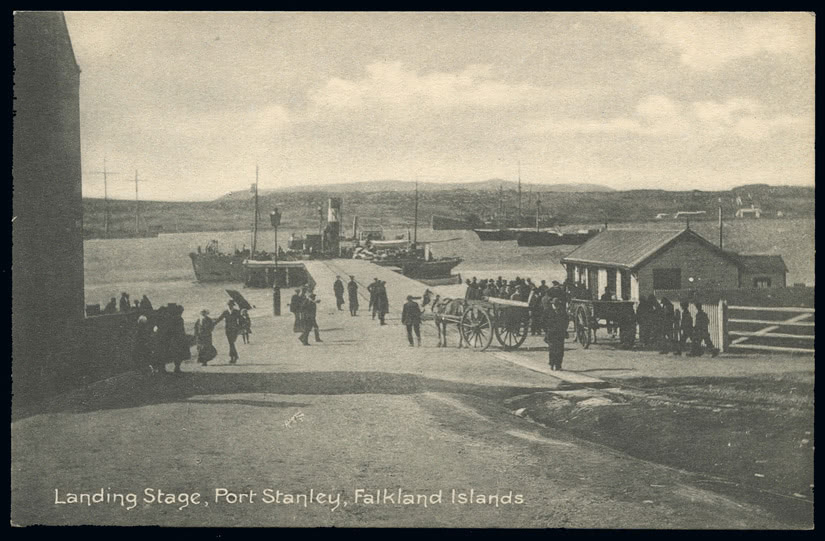
When the Falkland Islands Company bought the Castalia it can only be imagined their intention was for the transport of people rather than commodities. It would not be beyond the wit of man to convert Castalia, but why go to the expense when far more suitable craft could have been purchased, presumably far cheaper, for the purposes of mere cargo? Far more likely that a fine schooner like Castalia would attract those with business interests and those looking for exotic travel between the lands of Argentina and the Falkland Islands, indeed Castalia’s known journeys would perhaps bear that out…… Castalia sailed from Portsmouth, departing 27th of September 1888 commanded by Captain E F Collard, reaching Port Stanley 15th December of that year. The passage took Castalia to Monte-Video, somewhere she would become used to in the next five of years. Interesting to note that the passage from Monte-Video to Port Stanley was storm lashed, Castalia lost her Jib Boom and Binnacle on the trip. On her arrival one Frederick Cobb (The aforementioned Colonial Manager of the FIC) recorded of Castalia “….She has a lamentably poor, undersized crew…” (Bishop. T. (F.I. National Archivist): e-mail correspondence to C Jones 04/20) and that Castalia carried too little ballast, to which he added 15 tonnes of iron!
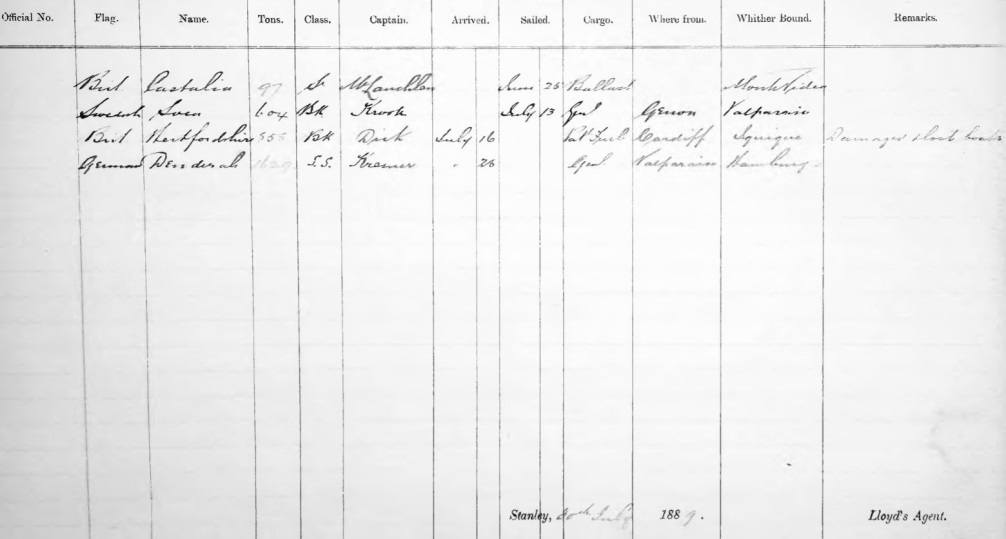
Over the five years Castalia was owned by the FIC she seems to have mostly run the Port Stanley to Monte-Video route, twice in 1889 under skipper Mc. Laughlin up to June of that year, and then somewhere between June & September she transferred the helm to Frances Rowlands for her second trip, arriving safely back in Port Stanley on the 20th October 1889. The journeys are recorded by the FIC which was also the Lloyd’s Shipping Agent for the Falkland Islands (and I believe still is). The Lloyd’s records are available to view on-line at the Jane Cameron National Archives of the Falkland Islands and a review of departures sees Castalia appear to have been in ballast out to Monte-Video, returning presumably with cargo of some sort, to some small amount, but more likely with human cargo
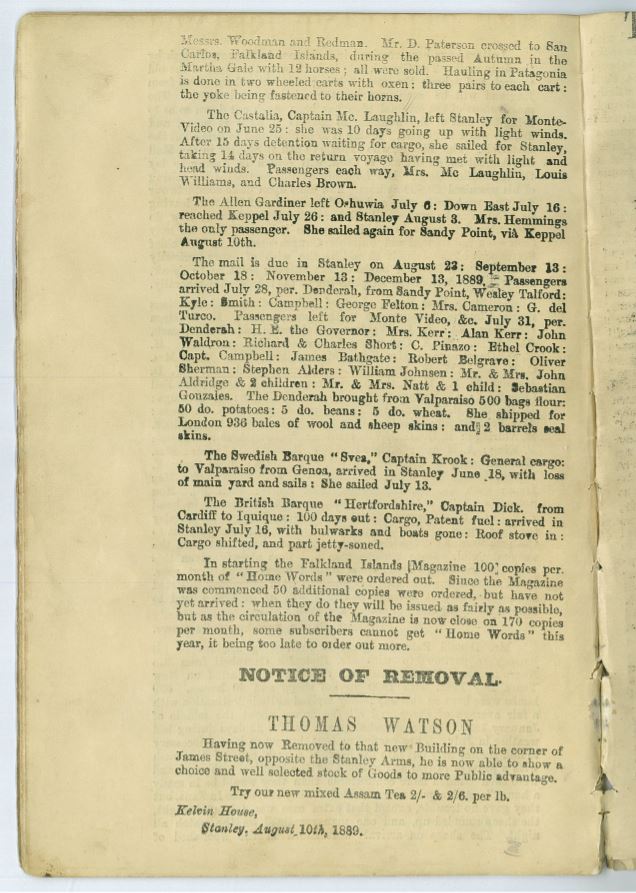
There are no Castalia journey’s in the Lloyd’s register for 1890, however the Falkland Islands Magazine record her bound for West Falkland carrying the Cobb family, Mr, Mrs and Miss Cobb, (20th November of 1890) presumably the ubiquitous Colonial manager of the FIC and his family, I find it odd that there is no marked departure from Port Stanley noted in the Lloyd’s register, however, it may be that local “coastal” voyages were unmentioned as a matter of course, whilst international travel was mandatory, it would be fascinating to find the truth of the matter as it may explain a later anomaly too……..

Whatever the reason the voyage is not recorded in the Lloyd’s register, the trip around the Northern limits of East Falkland to the accessible anchorages, most likely Pebble Island or West Point Island, is normally 2 days by sail, the weather not often favourable in the South Atlantic Ocean most of the year round! Castalia’s next voyage is recorded in the Lloyd’s register and sees her again bound for Monte-Video, departing on the 13th November and again noted to be “in ballast”. Nothing is remarked in the register on her return to Port Stanley 21st of December of 1891 her cargo is noted as “general” (annotated under the entry for the schooner “Ione” where “do” is taken to mean “ditto”), nor any passengers noted. There are no further entries in the Lloyd’s register for Castalia but there were definitely other journeys, the Falklands Island Magazine again records a Mr George Cobb and his family arriving from Lively Island in Port Stanley aboard the Castalia 07th October of 1892, the last mention for that year. There must have been at least one more sailing from Port Stanley, there may have been several (that cannot be determined) however, it is inevitable that there was a sailing to West Falklands, specifically, Weddell Island, around March of 1893 as the next entry in the lifetime of the Castalia would be her last………
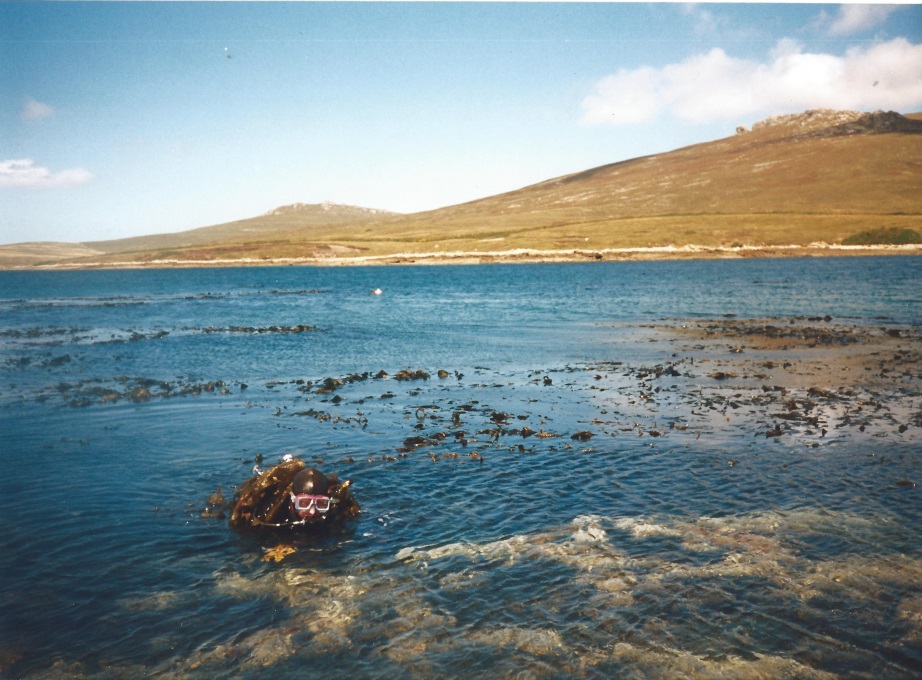
Castalia appears briefly in the Falklands Islands Magazine of April 1893 “…During the good Friday gale, the Castalia dragged ashore at Weddell and was damaged on the rocks.” Lloyd’s list of Thursday 04th May 1893 reports (Para 15: “Maritime Intelligence”) “CASTALIA. – Stanley F.I. (by Tel. from Montevideo, May 3, 8 p.m.) –Castalia schooner, belonging to Falkland Islands Company, ashore at Weddell Island, Falklands; considerably damaged.” The Lloyd’s list a month later, 23rd June of 1893 reports “CASTALIA. – Stanley, F.I., May 19. – The schooner Castalia is not yet afloat, in consequence of the tides serving badly at this time of year. A Diver, however, proceeded to Weddell Island this morning, and it is hoped she will shortly be got off and sufficiently repaired to be brought here.” The final and sad demise of Castalia is borne to the world in a brief sentence in the Lloyd’s list of Friday 28th July 1893 and reads “CASTALIA. – Stanley, F.I., June 27 (by Tel. from Montevideo received July 27.) – Castalia abandoned, being c nsidered a total loss.” Thus ends the Castalia, forlorn and abandoned off the settlement at Weddell Island, not only in sight of shore, but hard against it and the hidden rocks of the headlands of a remote Island in the South Atlantic Ocean, brutal and unforgiving, wild and untamed, with weather that can turn in minutes from benign to terrifying and which, in a gale on Good Friday of 1893, took the Castalia, the Nymph of Delphi to ruin
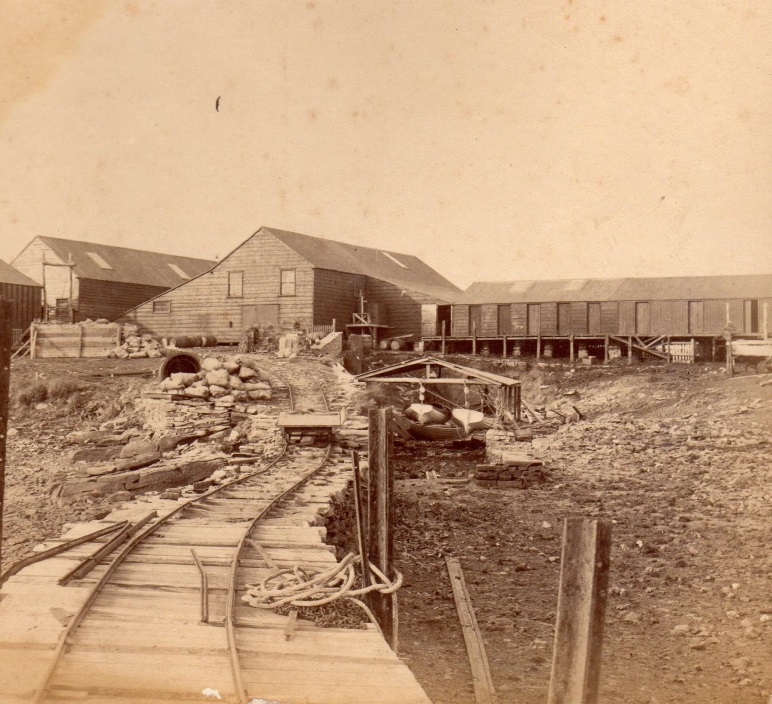
05th January 1996 and Exercise Southern Craftsman is in full swing, we are doing a shake-out dive in our first location and my little Red book records: “Ran into the wreck of Castatia on a checkout dive. She was a Schooner (100 Ton 80 x 20 ft) wrecked on Good Friday 1893 little remains of her but Rib Spars and a good length of hull timbers which are heavily rotted & covered in kelp but we were short on time towards the end of the dive – worth another look & a good root round.” Even then there was ambiguity around the Castalia, as borne out by the incorrect naming of the wreck from the outset…. We did return to her two days later (07th January 1996) and the Red book notes: “ Castatia Pre-Survey buoyage down on to the wreck then along to the stern. Fixing buoys for the survey team (to remaining wood work) then in & out amongst thick kelp along the remaining timbers. A good dig round but I feel the Islanders stripped her bare for timber etc. Atmospheric though, after 100 years below.” The last sentence was prescient as during my correspondence with the Falklands Islands Archivist, Tansy Bishop (to whom I am very grateful for the assistance with this piece) notes: “The Castalia was abandoned by the Falkland Islands Company Ltd as a total wreck in June 1893. All of the vessel’s gear, etc, that could be was collected and sold by auction” which is not surprising considering the lack of timber available on the Falkland Islands and the need to re-use whatever could be obtained at the time
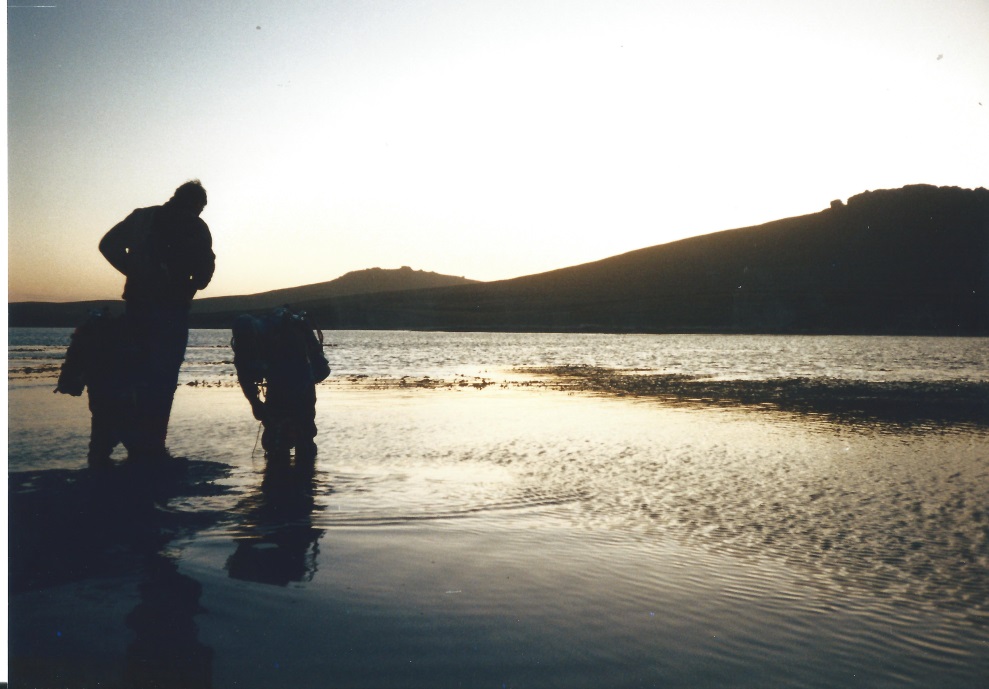
As usual, there’s half a story in the dive log and the remainder in my head, the first encounter with Castalia came as a surprise, neither I nor my buddy on the day, Chris, had any idea there was a wreck anywhere on the island (Weddell Island, our first stop in the Falkland Islands on exercise Southern Craftsman, there’s more on the Weddell dives elsewhere on here). I was genuinely surprised to be in amongst wooden ribs, so much so that it took a couple in a row before I realised what we were gently finning through. We didn’t have long left in terms of air, we had already been out 15 or so minutes, on a shakeout dive from the shore, off a decent rock plateau covered over at high tide. The dive had been uneventful and it looked like we would have to wind our way to shore through the kelp until it dawned on us this was a little more than just kelp. I had come in at an angle to Castalia, and was somewhere near the Transom in the last few rib spars before some more substantial wood appeared which turned out to be her stern, which meant she had come to rest Port side against the rocks off-shore by 80 or so meters in around 6-8 meters of water, enough to have most of her hull underwater when she went aground. The second dive was a mission, as soon as Don Shirley heard we had come across a wreck he did some calling and talking with the owners of Weddell Island and the name Castatia came up, we know that was a mis-pronunciation or mistake at the time but it meant we could do a little research of our own, and Don instigated a video run down the keel of the wreck. For this we set up buoys as start and end point and a run line down her keel. On the second dive we found way more wreckage than we’d originally came across, the first dive had informed us of her “lie” in the water, the second allowed us to see the extent, including a ferret around her transom where we came across a couple of Brass letters still attached to the stern, two A’s and an L if I recall correctly, but it has been a while and I can’t honestly be sure
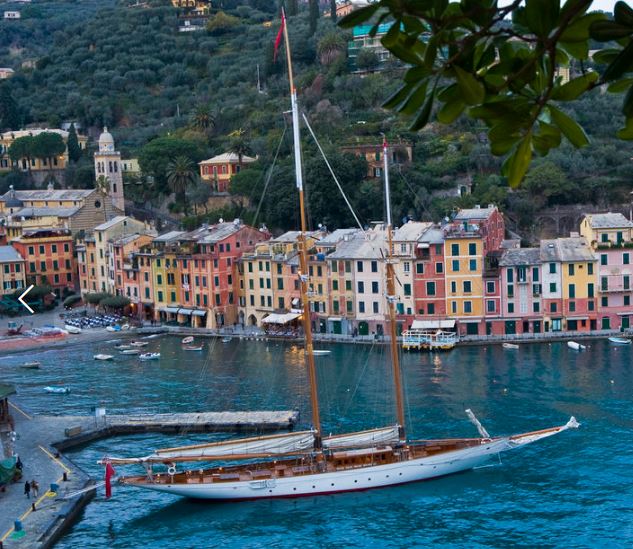
Castalia had an illustrious life, feted by the high and mighty of English society, her owners ranged from English Military to English Nobility and her passengers from Lords and ladies to would be murderers and to those seeking new lives on distant, windswept islands so remote as to be of a different realm…..and yet Castalia sailed unnoticed for most of her life, her name an occasional whisper, almost out of earshot in a wind that steals detail, a ship of the finest heritage, fitted in the most lavish way, by the most prestigious yard and the most sought after designers and yet, like the Marie Celeste, she ended up abandoned against a shore so distant as to be unreachable, with no headstone save 3 Brass letters under 6 meters of sea…….
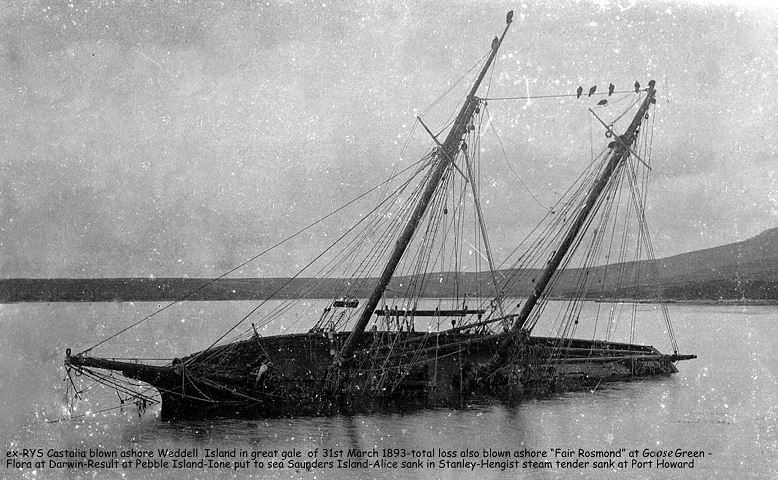
Although at time of initial posting for this piece there were no known photos of Castalia, I am deeply indebted to Mr Robert Rowlands, ancestor of Captain Frances Rowlands, master of the Castalia on the night of the worst storm the South Atlantic had seen in years on that Good Friday of 1893, for the photos of Castalia hard ashore at Weddell island and for the following account of Castalia’s loss from Captain Rowlands himself, given at the time:
“We arrived at Gull harbour, Weddell on Thursday noon with much rain and fresh breeze from the north and landed the passengers but could not work cargo, anchored in 5 fathoms and paid out 30 fathoms of chain on the starboard anchor and had the Port anchor prepared to let go, the barometer showing 29.40, about 8pm rain cleared and pleasant night and being very tired went to bed at 9pm,at about midnight the blast of wind awoke me and it was a great hurricane from the south east, I jumped out of bed without my boots, hat or coat and rushed forward and let go the port anchor and paid out until both anchors pulled alike, about 45 minutes past midnight a sudden blast of wind came down upon us that no anchors could hold and touched the ground on the port side to the rocks and to my mind, I should say and judge she is badly damaged”
It is awful to imagine Castalia dragging her anchors, her lines straining against the inevitable, seas pounding her sleek flanks until it was all too late and fate and the Gods took Castalia back to the waters, not of Delphi and the gentle streams of the oracles….. but of the raging South Atlantic Ocean and the kingdom of Poseidon……..
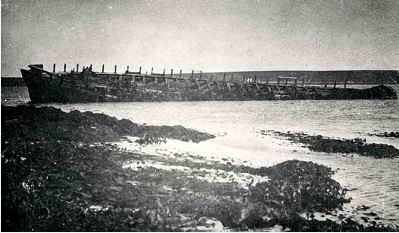
I would like to personally thank Tansy Bishop, National Archivist of the Jane Cameron Falkland Islands National Archive, Anne Dixon & Giulia Callegari of Camper & Nicholson’s, and Anne Andrews, researcher & publisher of the Ingestre Family history, for their assistance with information for this piece, for which I am truly grateful
Revision January 2021:
I must also thank Mr Robert Rowlands, ancestor of the Castalia’s Master during most of her time in the Falkland Islands, Captain Frances Rowlands, for his correction of several inaccuracies in my initial post. I am indebted to Robert for the information provided and for his provision of the photos of Castalia and her sistership the Ianira

Mr Jones,
I note your story of the Schooner Castalia, I think you will find she was built by Inman (now Berthon) of Lymington in 1874 for Adrian Hope rather than at C&N in Gosport, if you want a picture of her, suggest you look up schooner Ianira built for Captain Thomas Hargreaves on the web, you should find a nice picture of her under full sail, I think she was an near identical sister vessel of Castalia also built in 1874 by Inman. I will check to see if we have anything in the family Archives as my ancestor was Captain of Castalia and many other schooners including Adrian Hopes larger replacement for Castalia, called Fortuna built in 1876 also by Inman.
Robert, (I hope you don’t mind me using your first name?) Thank you for getting in touch and what an unexpected pleasure to hear from you. I hope we are speaking of the same ship here as I found it a really difficult task to get to (what I thought was…) the bottom of her story. I spent several years digging into records from newspaper pieces to the national maritime archive, but I will be happy to be corrected if it turns out there is something I missed? Can I ask you to use my personal e-mail and if you have the time and inclination we could do some comparisons and you can correct where I have drifted off path perhaps, it will be a joy to me I promise you, as the Castalia has fascinated me from my first dive on her
my e-mail is [email protected]